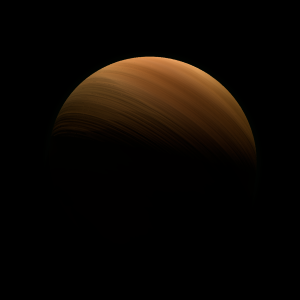|
|
Space Astro
|
Info for exoplanet "Cajin"
| Scientific (actual) data |
|---|
| Name | Kepler-328 c |
| Planet status | Confirmed |
| Planet mass | 0.124 |
| Radius | 0.482 |
| Orbital period | 71.312 |
| Discovered | 2013 |
| Updated | 2021-02-05 |
| Publication | Published in a refereed paper |
| Detection type | Primary Transit |
| Alternate names | 2MASS J19431423+4000306 c, K01873.01, KIC 4939346 c, KOI-1873 c, KOI-1873.01, WISE J194314.22+400030.6 c |
| Star name | Kepler-328 |
| Right ascension | 295.81° |
| Declination | 40.01° |
| Mag j | 14.463 |
| Mag h | 14.194 |
| Star distance | 2354.42 |
| Star metallicity | -0.186 |
| Star mass | 1.1 |
| Star radius | 1 |
| Star temperature | 5914 |
| Star alternate names | 2MASS J19431423+4000306, KIC 4939346, KOI-1873, WISE J194314.22+400030.6 |
| Wikipedia article | Kepler-328 c |
Back
| |
| Fictional info (?) |
|---|
| Suggested name | Cajin |
| Planet type | Small cold gas planet |
| It has the longest rotation period (445 days) of any planet in its solar system and rotates in the opposite direction to most other planets.
It is the coldest planetary atmosphere in its solar system, with a minimum temperature of 68°K (-205°C), and has a complex, layered cloud structure with helium thought to make up the lowest clouds, and ozone the uppermost layer of clouds.
It has the densest atmosphere of all the small cold gas planets, consisting of huge amounts of ozone. |
| Atmosphere | Ozone | 62% |
| Helium | 24% |
| Neon | 13% |
| Molecular hydrogen | 0.086% |
| Atmospheric pressure | 11 bar |
 |
| No known satellites |
| Google search for Cajin |
|
Website by Joachim Michaelis
|
|
|
|